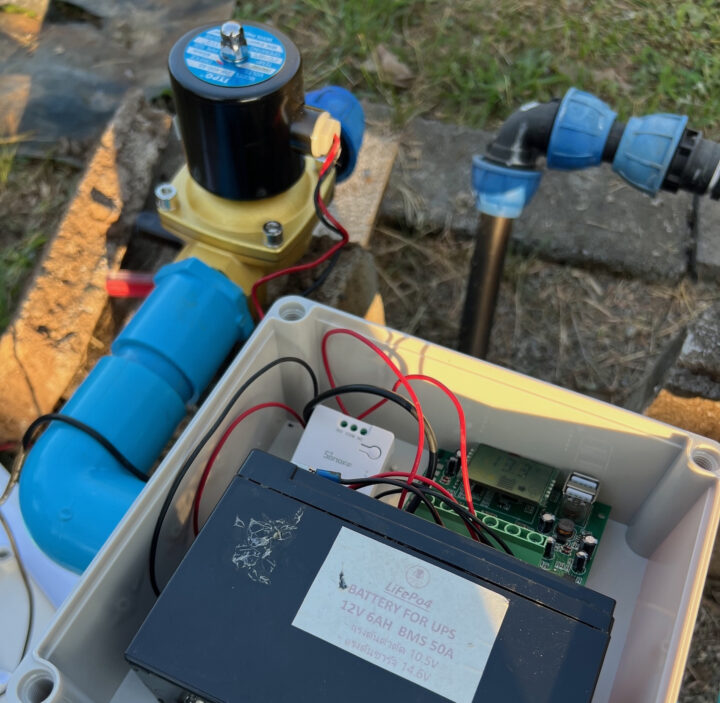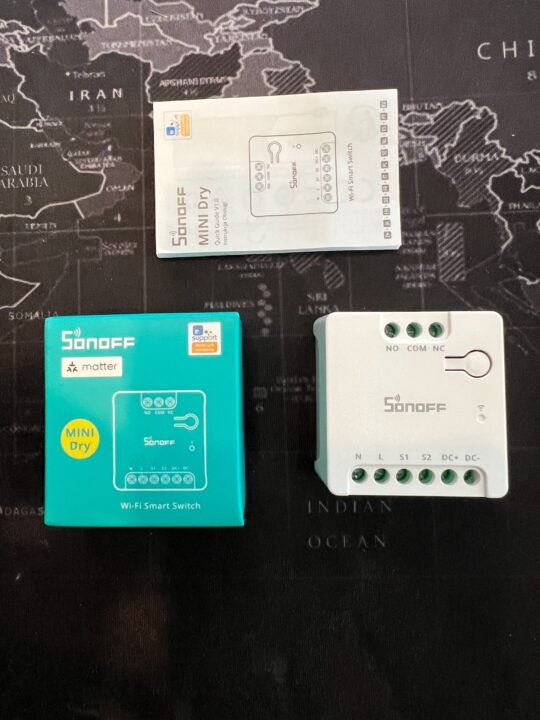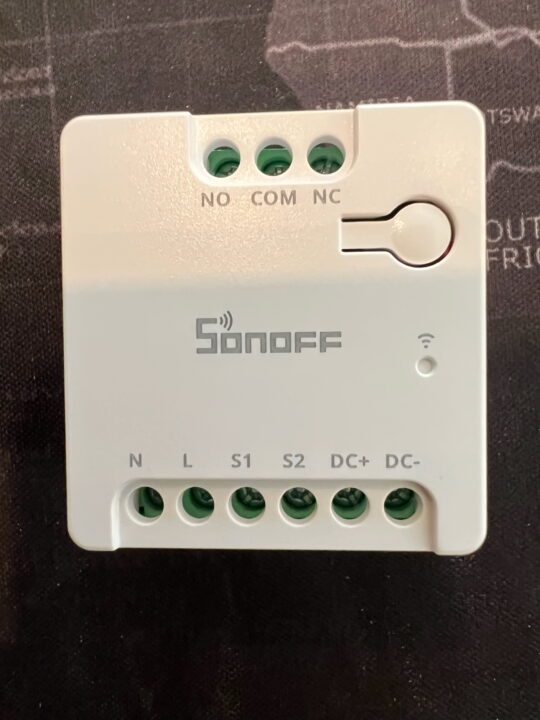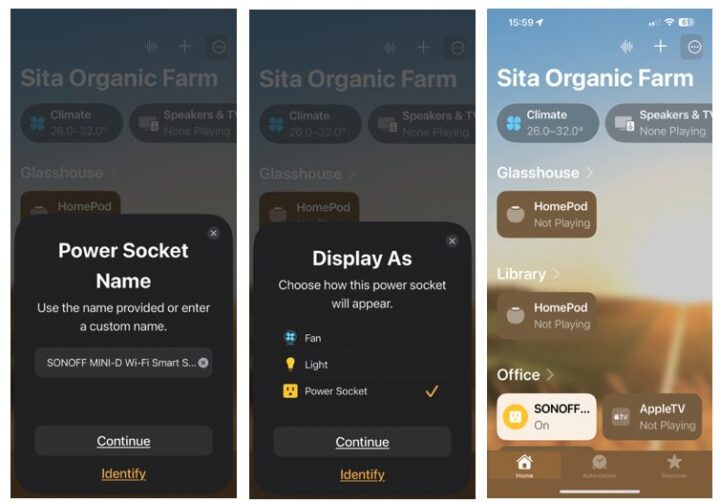SONOFF sent us a sample of the MINI-D Wi-Fi smart switch with a dry contact design for review. If you’re familiar with the larger SONOFF 4CH Pro model, which features four channels, the MINI-D operates similarly but is smaller in size and comes with the latest software features.
The principle of a dry contact is that the relay contacts are not directly connected to the device’s power supply circuit. Instead, the contacts are isolated and require an external power source to supply power to the load. Make it flexible to use the SONOFF Mini-D in various scenarios such as controlling garage doors, thermostats, or high-current electrical devices through a contactor, like water pumps.
It can also manage low-power DC devices such as solenoid valves or small electric motors (<8W). Because the power supplied to the MINI-D and the power passed through its relay can come from different sources, it offers great flexibility. For example, the input power to the MINI-D could be 220VAC while controlling a 12VDC solenoid valve, or vice versa, using 12VDC input from a battery to control a 220V AC device.
Moreover, the SONOFF MINI-D is the first dry contact relay to support Matter, enabling seamless integration with platforms like Google Home, Apple Home, Home Assistant, and Amazon Alexa. Let’s take a closer look at its details.
SONOFF MINI-D unboxing
Inside the green box, which is similar in size to other devices in the MINI series, you’ll find a small user manual with a QR code for Matter setup and the MINI-D (aka MINI Dry) unit itself. As shown in the image below, the device offers both AC (via N and L terminals) and DC (+ and – terminals) power input options. This versatility makes it adaptable to various scenarios, such as using battery power charged by solar panels or electricity from the grid.
At the top, there are three terminals for the relay: NO (Normally Open), COM (Common), and NC (Normally Closed). Most applications use the NO terminal, meaning the circuit remains open (no current flows) under normal conditions. Additionally, there are S1 and S2 terminals, which can be connected to an external switch to provide an alternative way of controlling the relay, aside from using the app.
For example, you can connect the SONOFF MINI-D to a traditional light switch and hide MINI-D behind it, enabling smart control without changing the external appearance.
With regard to energy consumption, we conducted a brief test on the power consumption of the MINI-D during operation. When the relay is active, it consumes approximately 1.5W, and when the relay is inactive, it consumes around 0.99W. Note that this measurement does not include the current passed to the load via the relay. Our measurements were taken using a SONOFF S31 Smart socket.
Teardown
We opened up the MINI-D to examine its components, as shown in the image below. The MINI-D board features an ESP32-DOWD dual-core MCU with WiFi and Bluetooth. Both the external and internal build quality appear robust and well-designed but still easy to disassemble.
Since this device supports Matter, SONOFF does not allow the flashing of third-party software such as Tasmota, ESPHome, or others onto the device. If you really need this capability, you could purchase similar individual components and assemble those devices at a comparable cost.
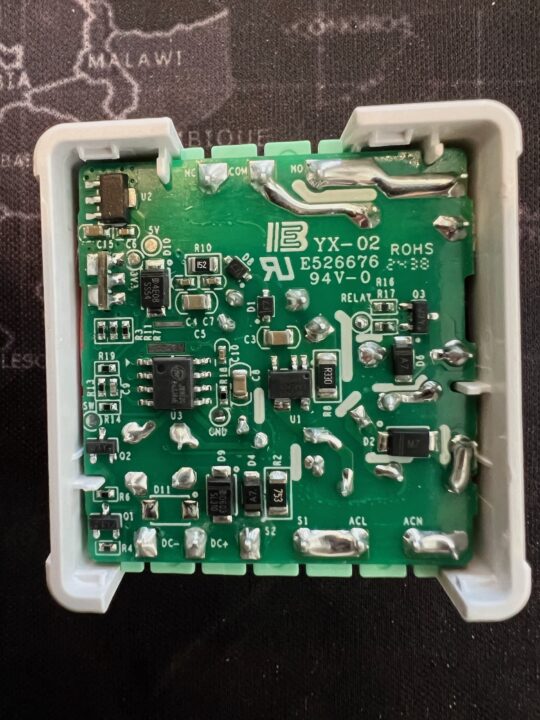
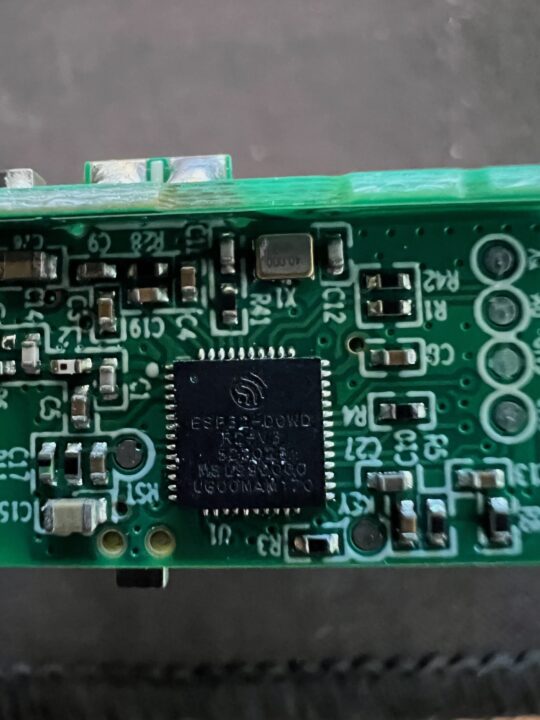
SONOFF Mini-D specifications
- Wireless SoC – Espressif ESP32-D0WDR2
- Connectivity – 2.4GHz WiFi
- Misc
- LED for network status, pairing mode, and switch type selection
- Button for ON/OFF, pairing mode, and external switch type selection.
- Max load
- 24V DC/2A resistive load OR
- 12V/24V DC up to 8W
- Power input
- 100-240V AC 50/60Hz up to 0.1A OR
- 12-48V DC up to 1A
- Dimensions – 43 x 41 x 21.5mm
- Weight – 34.5 grams
- Material – PC
- Temperature Range – -10°C~40°C
- Humidity – 5%~95% RH, non-condensing
- Operating height – Under 2,000 meters
- Certifications – FCC/CE/RoHS
- Safety – EN 60669-2-1
SONOFF MINI-D Review
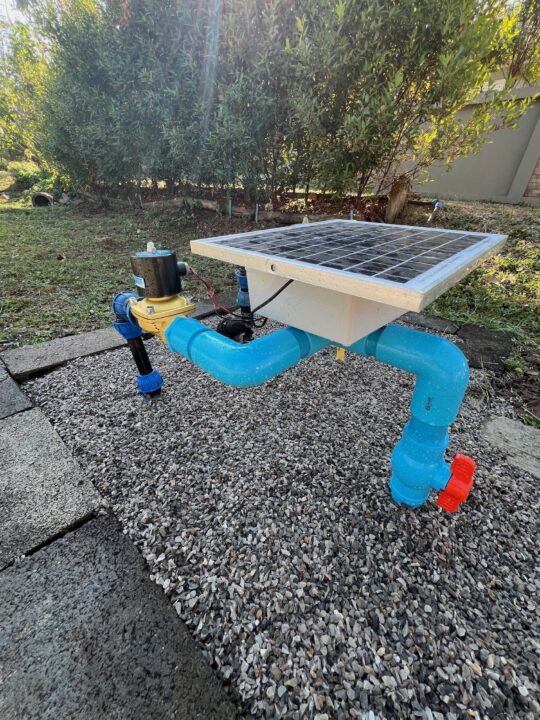
We tested the MINI-D in a real-world scenario by using it to control an outdoor automatic irrigation system. The setup included a 12V DC solenoid valve powered by a 12VDC LiFePO4 (LFP) battery with a solar charger controller managing the charging process from an 18V DC solar panel to the LFP battery. Both the MINI-D and the solenoid valve were powered by the same LFP battery. The MINI-D functioned as a relay to supply DC power to the solenoid valve.
According to the specifications, the MINI-D can operate with DC input ranging from 12-48 VDC, or it can be powered by AC. However, it cannot accept power from both sources simultaneously.
We configured the MINI-D to operate on a schedule together with other SONOFF devices, turning the valve and water pump on and off over several days, using both scheduled timers and automation through the eWeLink app as well as Home Assistant. The MINI-D performed as we expected. For real-world use cases like this, it’s important to calculate the battery capacity to ensure it can sustain operation during periods of low sunlight.
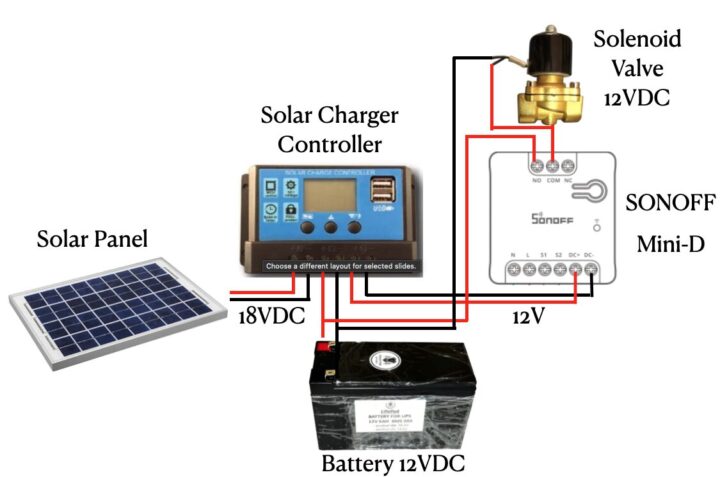
Testing the SONOFF MINI-D with eWeLink
We first tested the MINI-D with the eWeLink app and the setup process is similar to other SONOFF Wi-Fi devices. First, press the “+” icon at the top right of the home screen in the app. Then, follow the steps as shown in the image below. After completing the setup, the MINI-D will be added to eWeLink. You can set timers, schedules, or create scenes to integrate it with other devices within the eWeLink ecosystem.
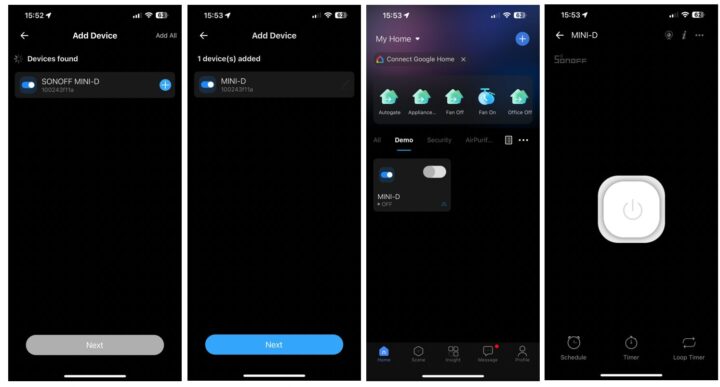
We explored the various options and found that the MINI-D includes several new features that are not present in the 4CH Pro model:
- eWeLink Remote Gateway: This feature allows the MINI-D to act as a gateway to communicate with eWeLink Remote devices, such as the SONOFF R5 scene controller or S-MATE2 switch mate, using a special Bluetooth protocol.
- Power-On State: This feature is standard, but the MINI-D is more flexible. When power is supplied to the MINI-D (e.g., after a power outage), you can set how it should behave (On/Off) or set a delay before turning it on. This can be useful if, for example, the power is unstable right after it is restored, and you want to wait before activating the MINI-D device.
- External Switch: A feature carried over from the Mini series, this allows you to connect an external switch, such as a regular light switch. You can hide the MINI-D behind a traditional rocker switch or use it with a momentary switch (e.g., a doorbell type).
- Inching Setting: This feature adds a timer for automatic operation after turning on (Auto On), which was not available in earlier models that only allowed Auto Off. This makes the MINI-D more versatile.
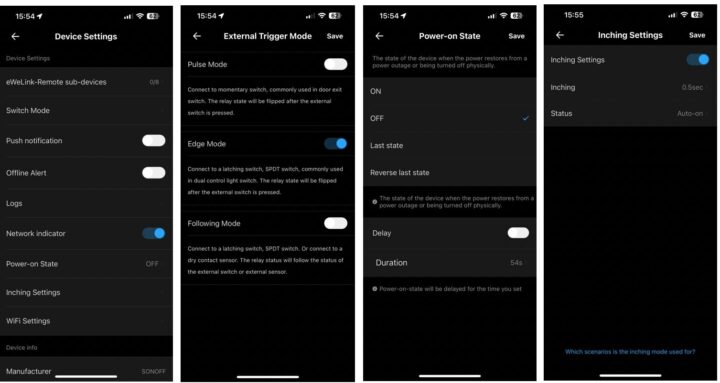
Testing the MINI-D with Apple Home via Matter
Next, we tested the Matter feature on the SONOFF MINI-D. First, we added the MINI-D to Apple Home following the steps shown in the image below. If you’ve already added the MINI-D through eWeLink, you’ll need to get the pairing code from eWeLink and enter it when prompted by Apple Home. However, if you’re setting up a new device that hasn’t been added to any platform yet, you can simply scan the QR code directly from the back of the MINI-D or the sticker included with the manual during the setup process in Apple Home.
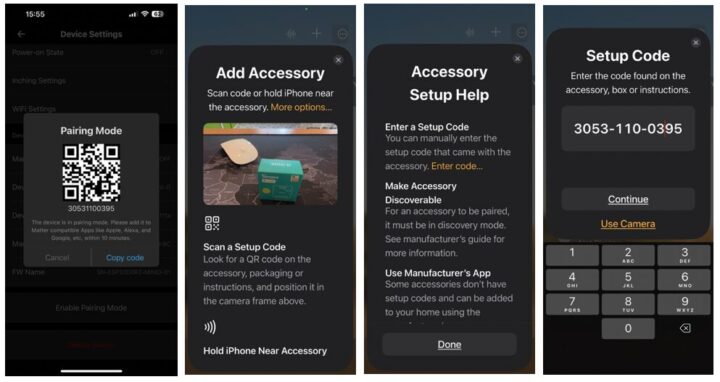
After adding the MINI-D device to Apple Home, we can easily set the device type as desired, following the steps shown in the image below. This process is simple, in line with the Matter standard. Once configured, the smart switch is ready to use in Apple Home and can seamlessly work with other devices across different platforms as well.
Testing Mini-D with Home Assistant via SONOFF Integration
Next, we tested adding the device to the Home Assistant platform via SONOFF integration. The environment was running Home Assistant OS v12.2, Home Assistant Core v2024.12.5, and AlexxIT Sonoff integration v3.81.
As shown in the image below, the resulting entities were basic ones, such as switch, signal strength, and LED. These entities were more limited compared to the options available when using the eWeLink app as we tested earlier. That’s not a surprise. Once the MINI-D was added, the entities could be used in Home Assistant as usual.
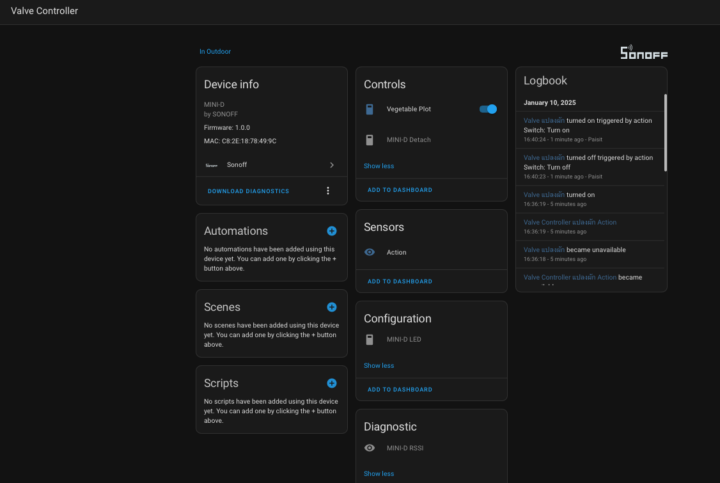
Testing MINI-D with Home Assistant via Matter integration
Next, we tested adding the device to Home Assistant again, but through the Matter integration. As a result, we also got the Power On State entity, which is a slight improvement. See the image below for reference.
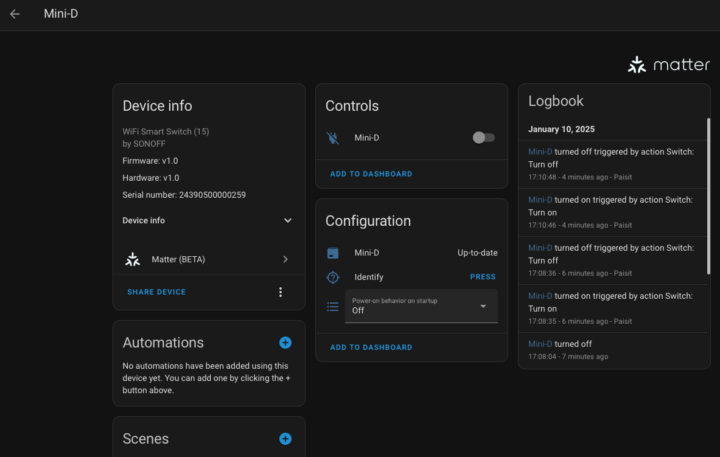
Comparing Mini-D Features on Different Platforms
Someone might ask which platform works best with the MINI-D. SONOFF has provided the comparison table below, making it clear that eWeLink offers more features. In reality, if users are fine with having multiple apps but prefer one as the main app, they can use Matter to enable cross-platform functionality. For example, we can use eWeLink for the initial setup and to take advantage of its extra features, and then share the Matter pairing QR code with other platforms. These platforms will continuously sync the device’s status, allowing us to enjoy all the great features even when using different platforms. However, this ultimately depends on the intended use case.
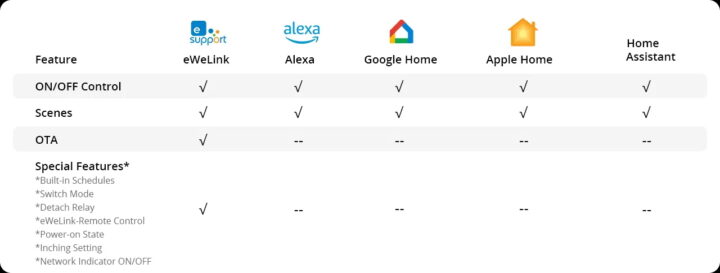
Conclusion
SONOFF MINI-D single-channel dry contact Wi-Fi switch is a decent device offering a wider range of features compared to its predecessor, the SONOFF 4CH Pro (also dry contact). With its compact size similar to the Mini series, the MINI-D provides one relay for operation and supports both DC and AC power input. This allows users to control both DC and AC devices, making it suitable for a variety of use cases. Most importantly, it supports Matter, enabling seamless integration with platforms like Google Home, Apple Home, and Alexa.
It’s not quite the first Matter device from SONOFF, and CNX Software has conducted reviews of Matter devices from the company in the past including SONOFF MINI Extreme Wi-Fi Smart Switch (Mini4M), SONOFF iHost Smart Home Hub, SONOFF SwitchMan Smart Wall Switch-M5 and SONOFF Zigbee Bridge Ultra.
We’d like to thank ITEAD for sending the SONOFF MINI-D smart switch for review. The company sells it for $12.90 on its website, and you can use the coupon code CNXSOFTSONOFF to get a 10% discount.

Computer Engineering who previously worked with multinational IT company, rich experience in IT infrastructure, has a passion on Internet Of Thing i.e., Smart Home, Smart Farm as well as interested on Sustainability such as renewable energy, organic farming
Support CNX Software! Donate via cryptocurrencies, become a Patron on Patreon, or purchase goods on Amazon or Aliexpress


